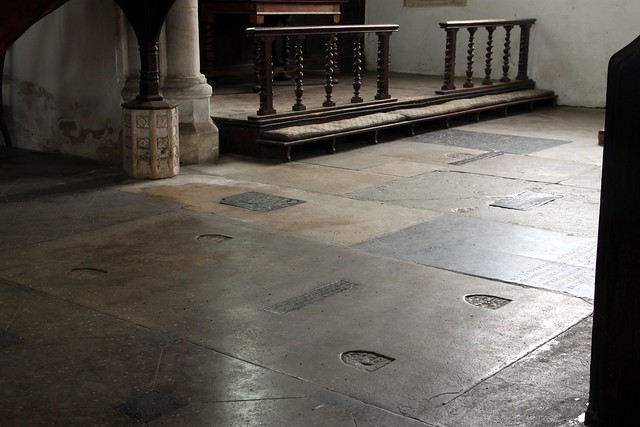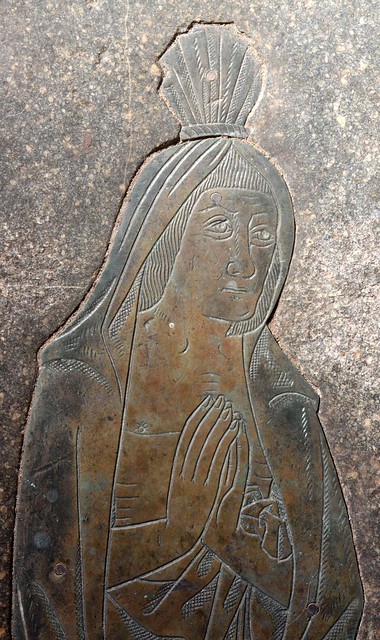Intramural burial in medieval churches, some thoughts
 |
| Intramural burial of a shrouded corpse in a medieval chapel. The tiled floor of the chapel has been lifted to enable the body to admitted to a shallow grave. MS M. 28, f.111r Morgan Library |
Intramural burial was a common practice in late medieval England,
not only for the socially elite on a county or national level, but for the
local elites too, the leading clergy, townsmen, tradesmen and householders. As England headed towards the Reformation, the
trend seemingly increased, a trend motivated by a
complex mixture of ideas. Among the pressures that led to the rise were the social pressures of fashion and prestige, but there were also more spiritual
motivations at work too. There was a sense that burial in church gave the deceased a beneficial
proximity to the holy, the closer the burial of the body to the chancel and the high altar
and to the Body of Christ reserved in the hanging pyx, the better. There may also have been a sense that burial
in church, with or without a marker, gave public exposure to the burial place,
which would enable a more lasting form of memorialisation than was possible in
the anonymity of the churchyard. Both the proximity to the holy and the possibilities for memorialisation, had spiritual benefits for the soul of the deceased, trapped in the pains
of Purgatory. The fashion for intramural
burial was in earlier times discouraged by the church, however, by the late fifteenth century it seems to have been encouraged by the local church authorities. The higher fees charged for burial in church,
as opposed to the churchyard, produced a source of useful (and reliable) revenue
for the churchwardens’, that could be used to benefit the religious life of the whole community.
In the absence of parish registers, early
churchwardens’ accounts give a good indication of the ubiquity of the practice
and the sliding scale of fees involved.
Take for example the Lincolnshire market town of Louth, where the
churchwardens’ accounts survive from the period 1500 to 1524. During this period the number of burials in
the church ranged from six (6) to thirty two (32) each year and in that entire quarter century, around two hundred and thirty (230) people are recorded as paying fees to be buried in graves within the church building. Of these twenty (20) are buried in the 'south kirke porch' in front of the main
church door. I was curate at Louth for a time and walked through that porch every day and it is a tiny space about 16ft square. It was evident that they were packing them in! Burials in the church were a tidy source of
income for the churchwardens’ of Louth who would receive 6s, 8d for a burial in
the church. It was cheaper to be buried in the 'south kirke porch', it only cost you 3s and
8d for the privilege of being constantly trampled under foot.[1]
Of course there were practical consequences to such high levels of
intramural burial. The constant lifting of
the floor and relaying of tiles, stones and other pavers to admit burials, must have been disruptive.
Certain areas, in front of the rood screen, in the centre of the chancel,
in side chapels before altars, were hotspots for burial, but they were also busy
parts of the building, in constant use in the liturgy of the church.
The physical consequences of the usual
English practice of burying corpses in shrouds in shallow graves, must have
created great discomfort for the living.
The putrid smells and effervescence emanating from hundreds of
decomposing shrouded corpses, must have made some churches in busy and populous
parishes, intolerable to linger in.
The physical consequences of solid floors that were supported only
by soil and decomposing human remains, must have been felt for generations, as floor
levels over burials dropped, slumped and became uneven. The evidence of the effects of shrouded
intramural burial, can still be seen to day in the undulating floors of some of
our medieval churches.





Comments